Cell specific effects of glucocorticoid treatment on the NF-kappaBp65/IkappaBalpha system in patients with Crohn's disease
- PMID: 10517905
- PMCID: PMC1727722
- DOI: 10.1136/gut.45.5.693
Cell specific effects of glucocorticoid treatment on the NF-kappaBp65/IkappaBalpha system in patients with Crohn's disease
Abstract
BACKGROUND/AIMS/PATIENTS: Glucocorticoid treatment is known to reduce nuclear factor-kappa B (NF-kappaB)p65 binding activity and activation in lamina propria cells of patients with Crohn's disease. However, lamina propria cells of glucocorticoid treated patients did not show increased expression of IkappaBalpha, and the hypothesised upregulation of IkappaBalpha by glucocorticoid treatment has not yet been shown in vivo. To investigate whether cells other than lamina propria localised mononuclear cells contribute to increased IkappaBalpha, resection gut specimens from patients matched for Crohn's disease activity index (CDAI) with or without glucocorticoid treatment were studied, and changes in the NF-kappaB/IkappaBalpha system were determined in the lamina propria as well as in underlying submucosal and endothelial cells.
Methods: Changes in the NF-kappaB/IkappaBalpha system were determined by immunohistochemistry, electrophoretic mobility shift assay, and western blot analysis in resected gut specimens from patients matched for CDAI and van Hees index with or without long term glucocorticoid treatment.
Results: Resection gut specimens from patients with Crohn's disease under glucocorticoid treatment had significantly lower nuclear NF-kappaBp65 levels in mononuclear, epithelial, and endothelial cells than samples from CDAI and van Hees index matched patients not having glucocorticoid treatment. Nuclear NF-kappaBp65 showed a strong positive correlation with both the CDAI (r = 1 for both groups) and the van Hees index (r = 0.605 for untreated and r = 0.866 for glucocorticoid treated specimens). Lower nuclear translocation of NF-kappaBp65 in the glucocorticoid treated group was paralleled by higher IkappaBalpha levels in vascular endothelial cells, but not in infiltrating mononuclear cells.
Conclusion: A comparison of resection gut specimens from untreated and treated CDAI matched patients with Crohn's disease showed downregulation of NF-kappaB binding activity and NF-kappaBp65 expression and cell specific induction of endothelial IkappaBkappa expression in the glucocorticoid treated group. As the two groups showed similar disease activity (CDAI, van Hees index), the activation of the NF-kappaBp65/IkappaBalpha system must be only part of the inflammatory cascade leading to the clinical appearance of Crohn's disease.
Figures
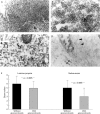
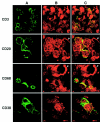

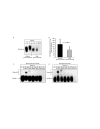
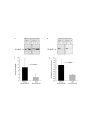


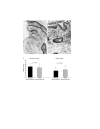
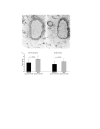
References
Publication types
MeSH terms
Substances
LinkOut - more resources
Full Text Sources
Medical
Research Materials
